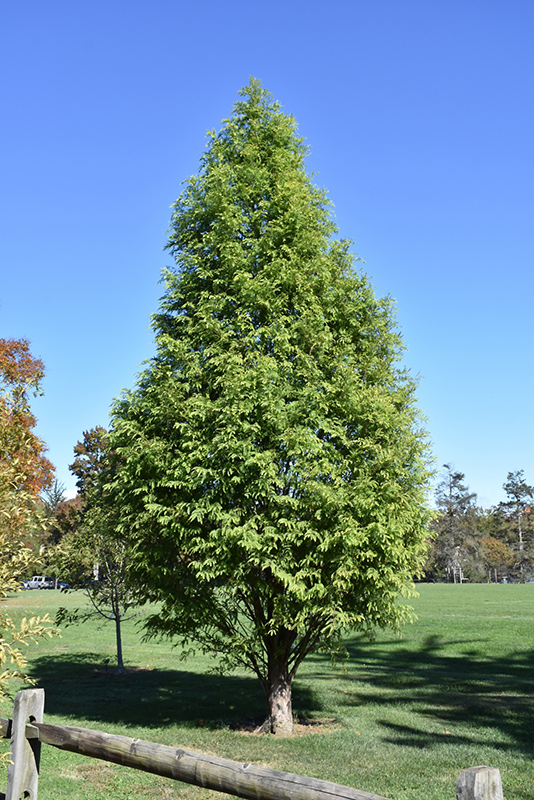Plant Finder
Waasland Dawn Redwood*
Metasequoia glyptostroboides 'Waasland'
* This is a "special order" plant - contact store for details
Height: 50 feet
Spread: 20 feet
Sunlight:
![]()
Hardiness Zone: 4b
Description:
An attractive, narrowly upright selection with a very delicate, ferny appearance and shaggy, attractive unusual black bark; airy green foliage changes to a lovely yellow-orange fall color
Ornamental Features
Waasland Dawn Redwood is primarily valued in the landscape for its rigidly columnar form. It has rich green deciduous foliage which emerges light green in spring. The ferny bipinnately compound leaves turn an outstanding orange in the fall. The peeling black bark adds an interesting dimension to the landscape.
Landscape Attributes
Waasland Dawn Redwood is an open deciduous tree with a strong central leader and a narrowly upright and columnar growth habit. It lends an extremely fine and delicate texture to the landscape composition which can make it a great accent feature on this basis alone.
This is a relatively low maintenance tree, and is best pruned in late winter once the threat of extreme cold has passed. Deer don't particularly care for this plant and will usually leave it alone in favor of tastier treats. It has no significant negative characteristics.
Waasland Dawn Redwood is recommended for the following landscape applications;
- Shade
- Vertical Accent
Planting & Growing
Waasland Dawn Redwood will grow to be about 50 feet tall at maturity, with a spread of 20 feet. It has a low canopy with a typical clearance of 4 feet from the ground, and should not be planted underneath power lines. It grows at a fast rate, and under ideal conditions can be expected to live to a ripe old age of 100 years or more; think of this as a heritage tree for future generations!
This tree should only be grown in full sunlight. It is quite adaptable, prefering to grow in average to wet conditions, and will even tolerate some standing water. It is not particular as to soil type or pH. It is somewhat tolerant of urban pollution. Consider applying a thick mulch around the root zone in winter to protect it in exposed locations or colder microclimates. This is a selected variety of a species not originally from North America.
* This is a "special order" plant - contact store for details

